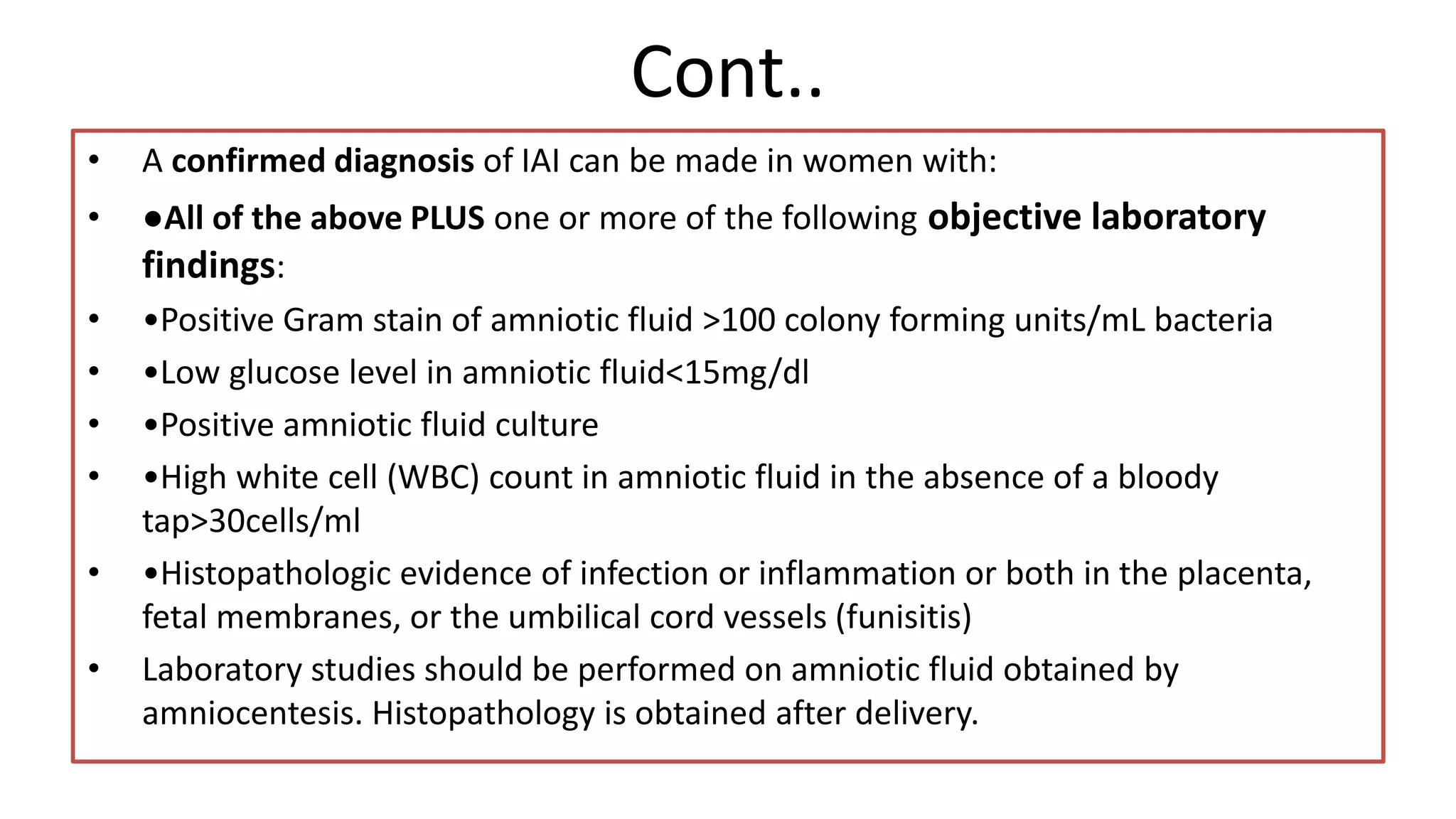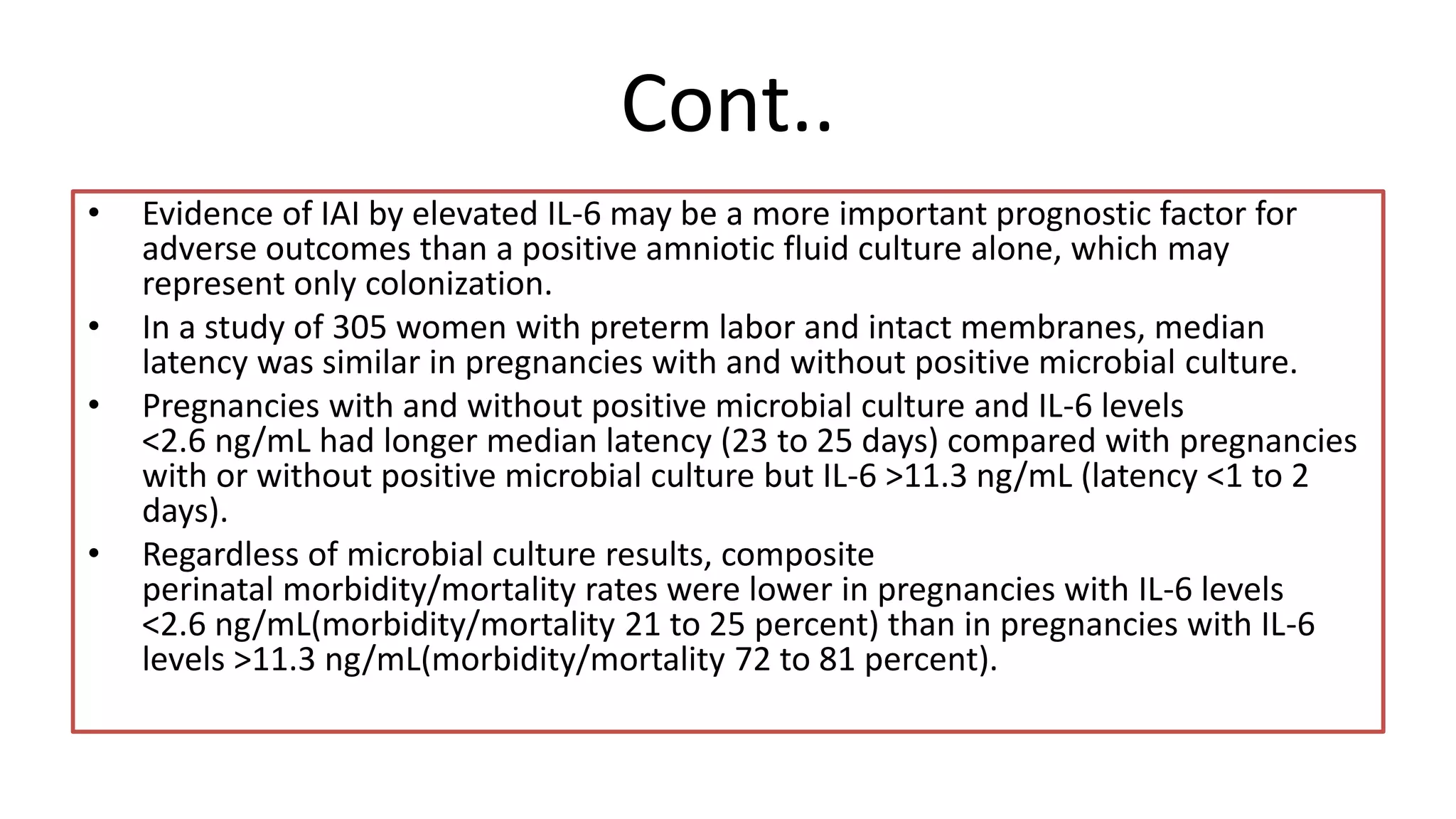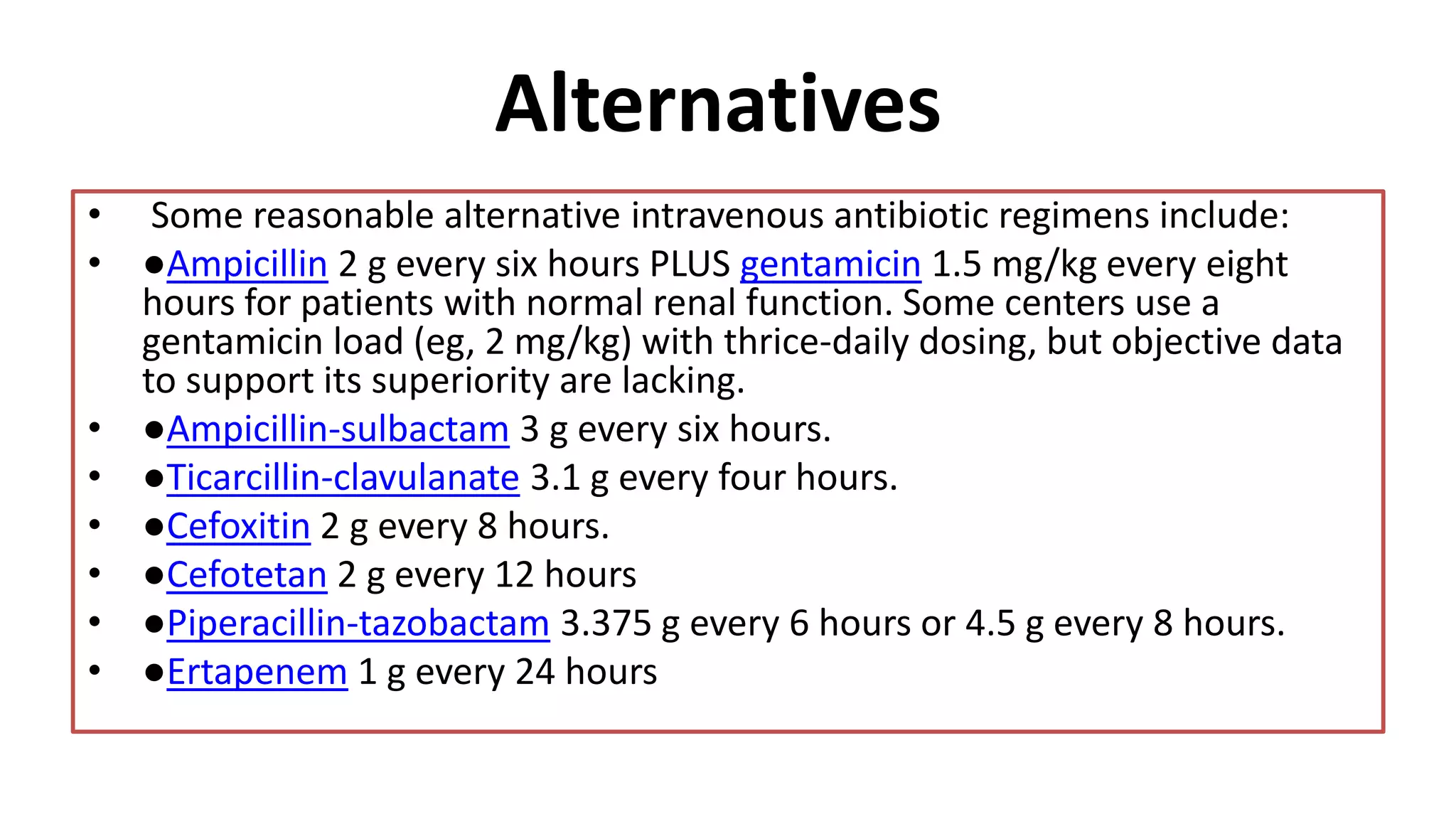This document discusses chorioamnionitis (intra-amniotic infection), including its pathogenesis, risk factors, clinical findings, diagnosis, and evaluation. Chorioamnionitis occurs when pathogens ascend from the vagina and infect the amniotic fluid and fetal membranes. It complicates 40-70% of preterm births and 1-4% of term births. Diagnosis is based on maternal fever and may include leukocytosis, fetal tachycardia, and uterine tenderness. Evaluation of amniotic fluid can confirm infection through culture, Gram stain, or glucose/white blood cell counts. Histologic examination after birth also helps diagnosis.




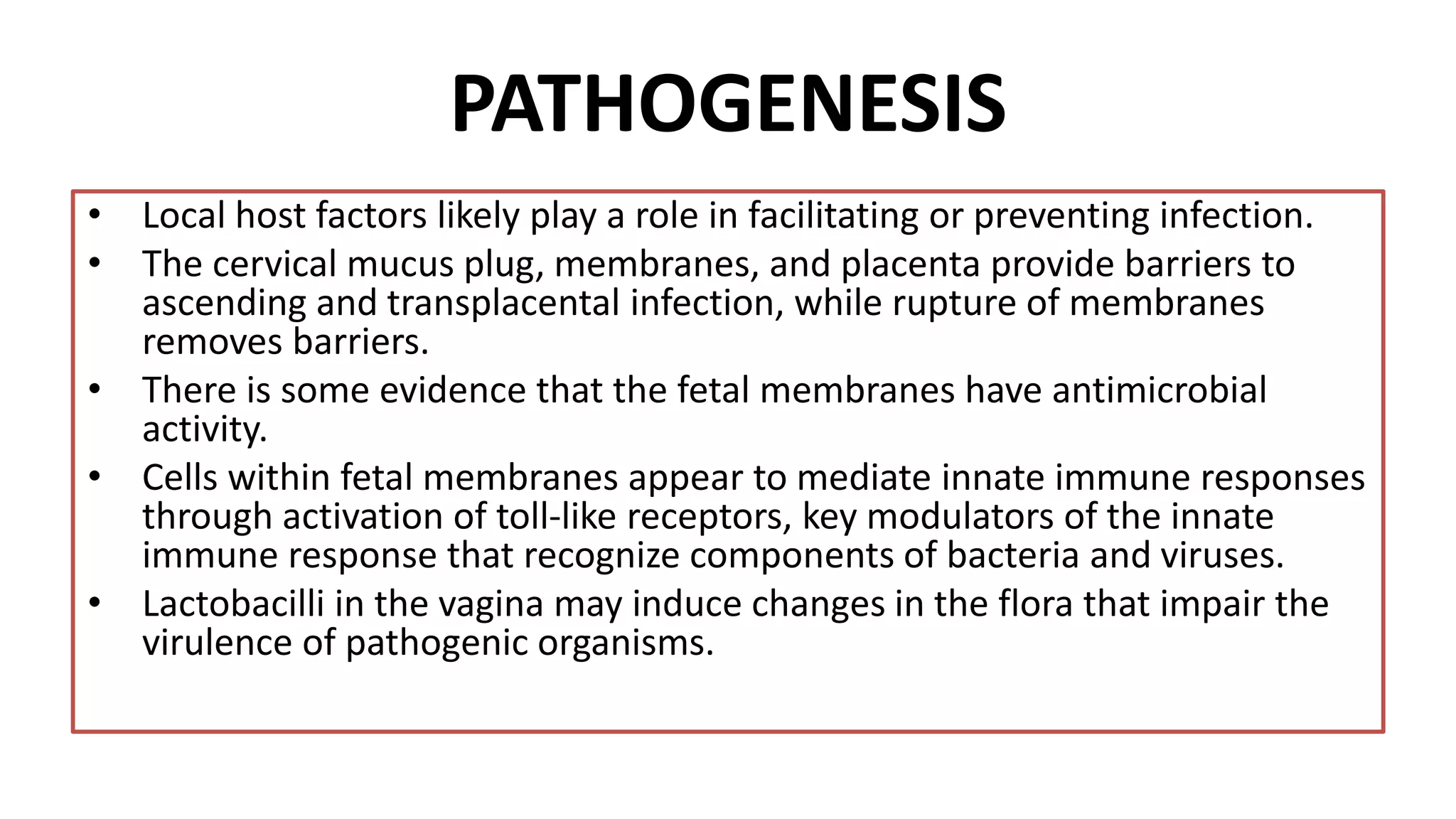










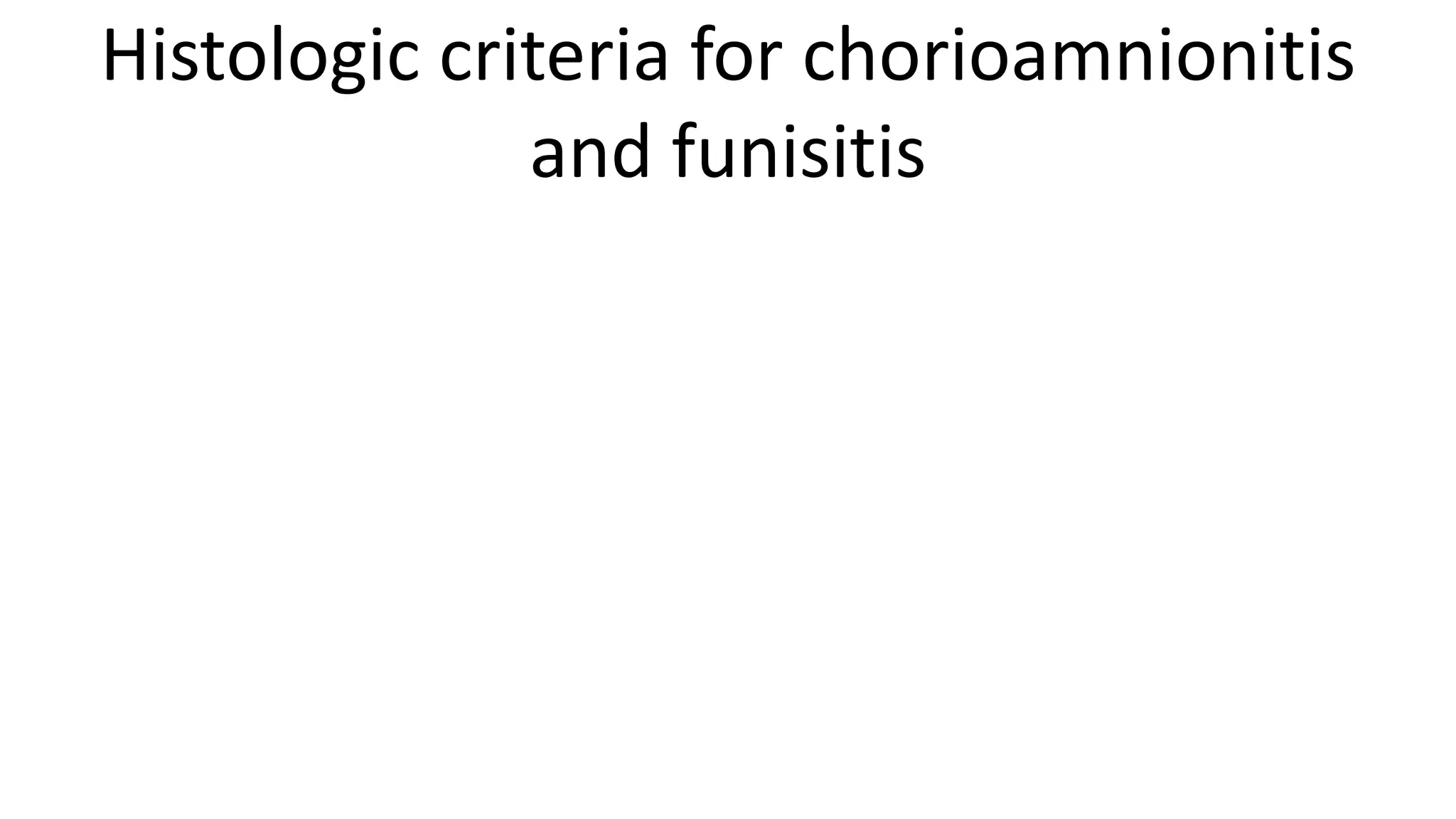


![DIAGNOSIS OF INTRA-AMNIOTIC
INFECTION
• Diagnostic criteria — The diagnosis of IAI is commonly based on clinical findings. The key
criterion is maternal fever, which is a manifestation of systemic inflammation; other
criteria are insensitive.
• Of note, for treatment purposes, ACOG further suggests that patients with isolated fever ≥39.0°C
(102.2°F) should be managed as having suspected intra-amniotic infection.
• A presumptive diagnosis of IAI (suspected triple I) can be made in women with:
• ●Fever – ≥39.0°C [102.2°F] or 38.0°C [100.4°F] to 38.9°C [102.02°F] on two occasions 30 minutes
apart, without another clear source PLUS one or more of the following:
• •Baseline fetal heart rate >160 beats/min for ≥10 minutes, excluding accelerations, decelerations,
and periods of marked variability
• •Maternal white cell count >15,000/mm3 in the absence of corticosteroids and ideally showing a
left shift (bandemia)
• •Purulent-appearing fluid coming from the cervical os visualized by speculum examination](https://image.slidesharecdn.com/chorioamnionitis-200905103415/75/Chorioamnionitis-19-2048.jpg)

